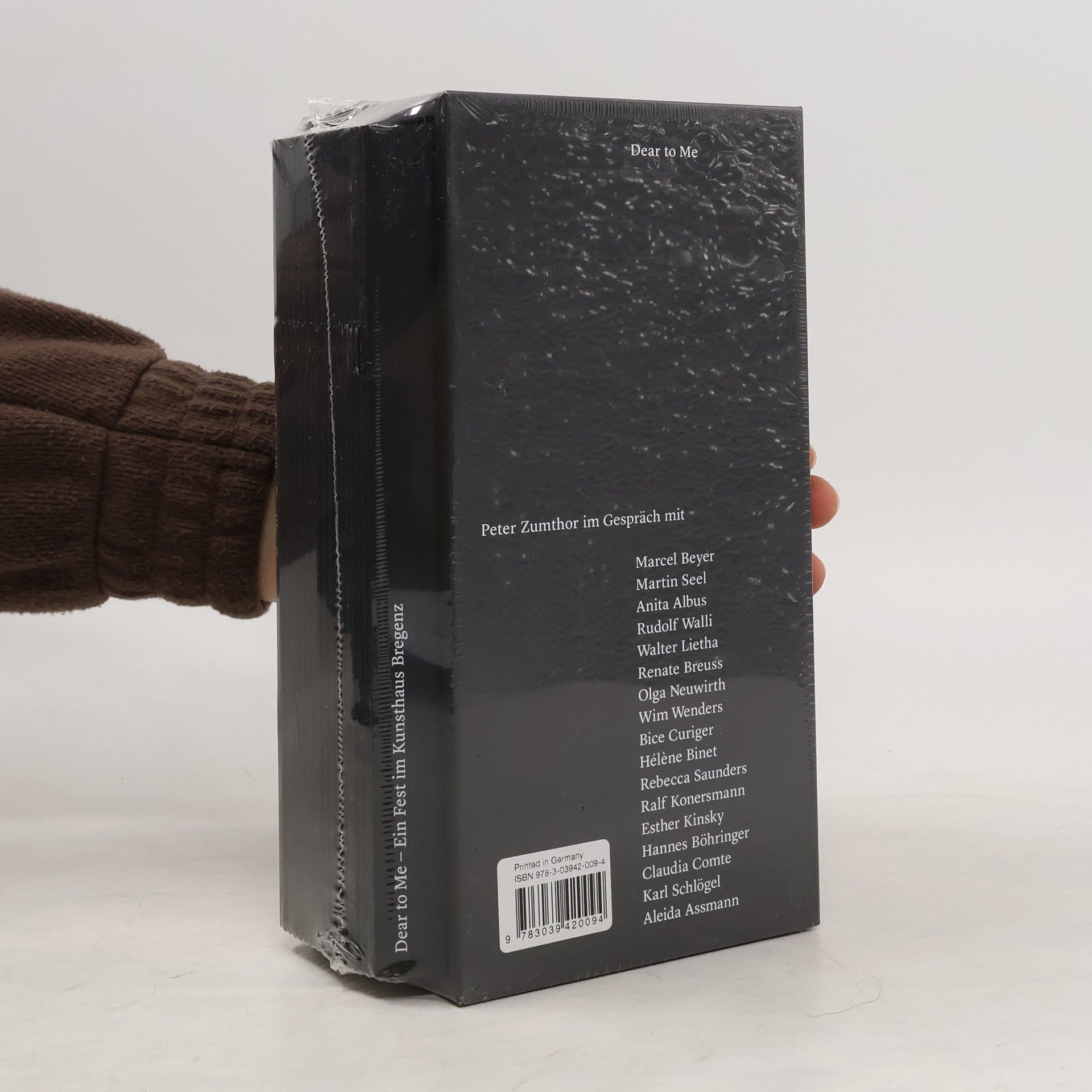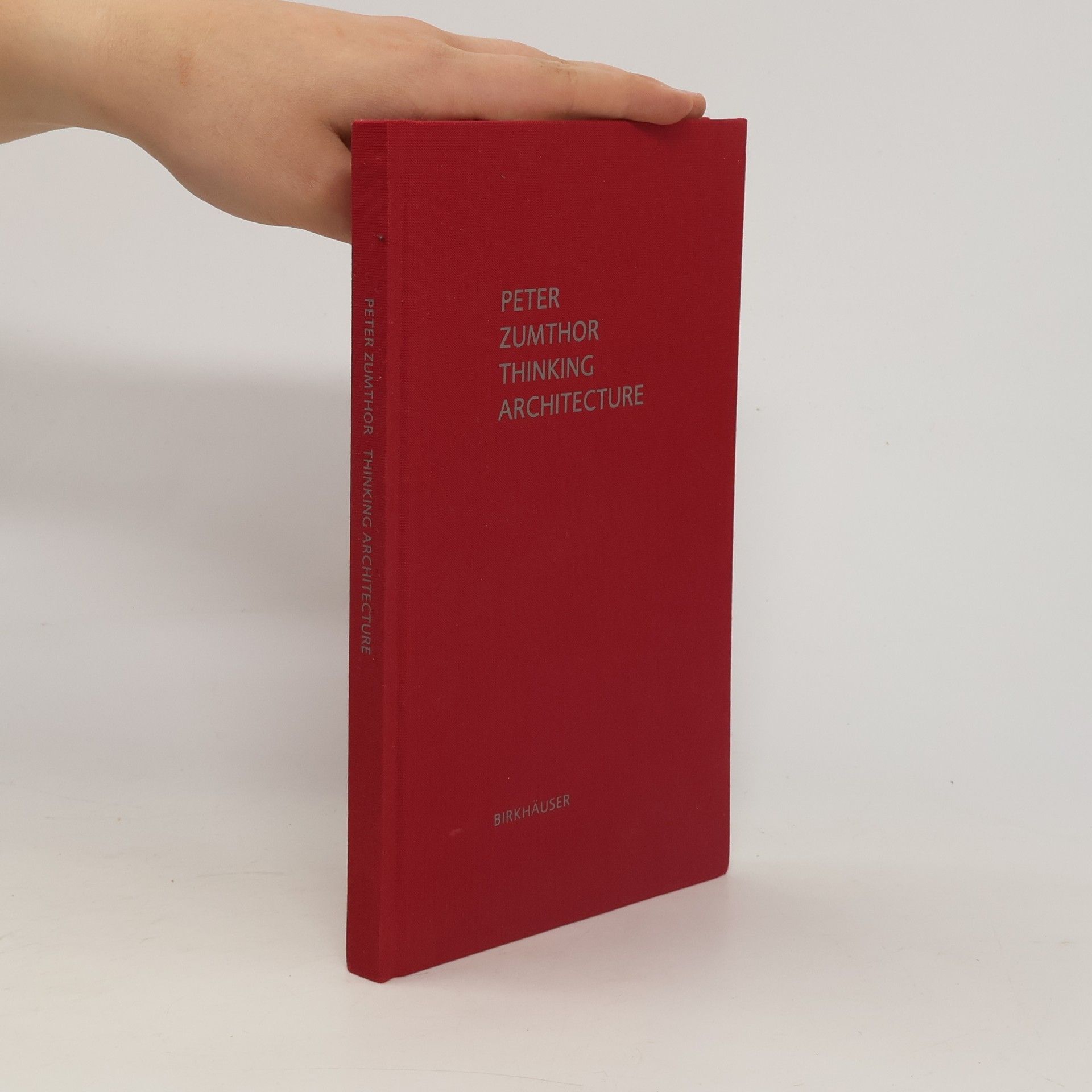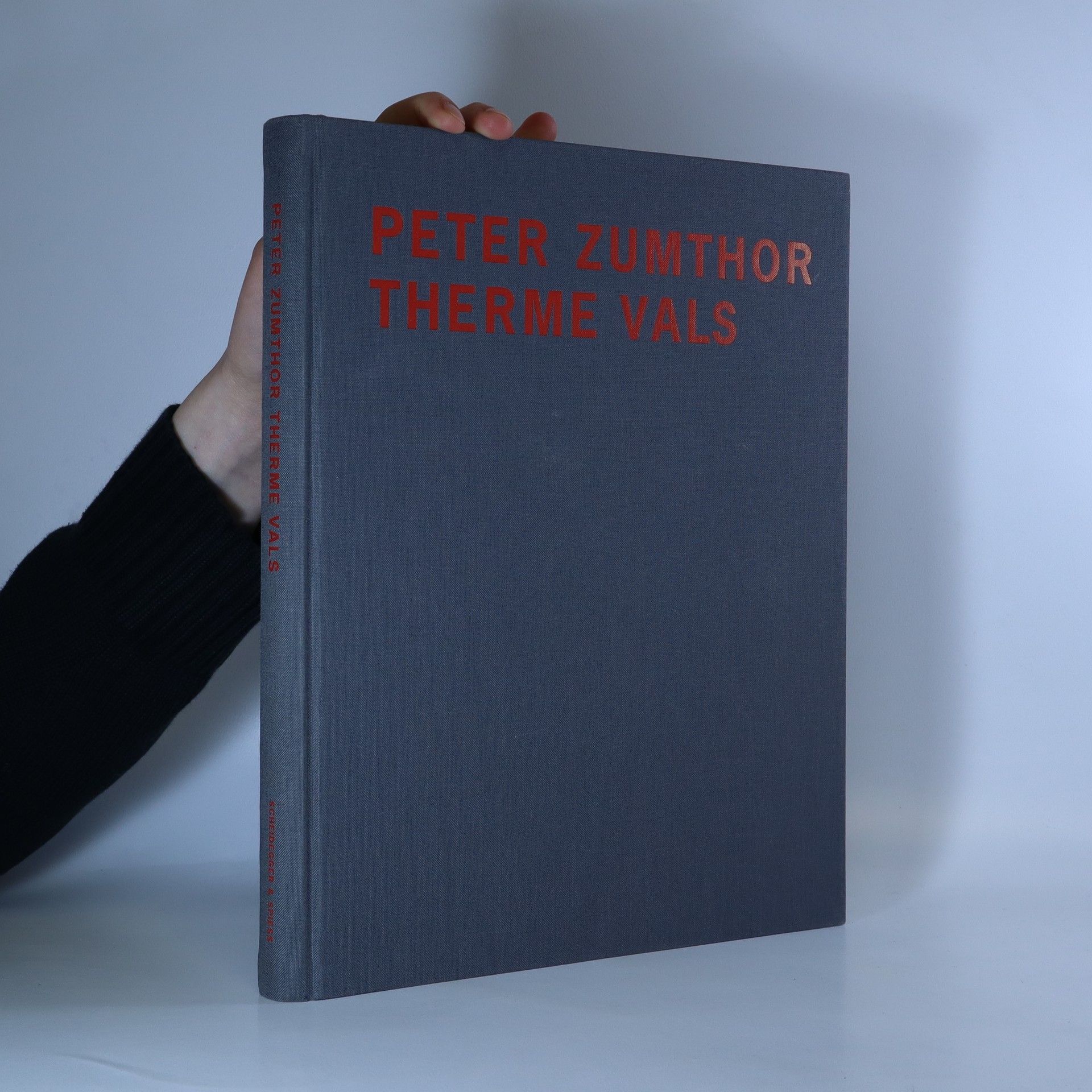The monograph features the renowned architect's texts, sketches, and drawings, showcasing his creative process and philosophy. It includes new photographs that highlight his architectural works, providing a visual journey through his designs. Additionally, a comprehensive catalog of his projects is included, offering an in-depth look at his contributions to architecture. This publication serves as a significant resource for understanding Peter Zumthor's impact on the field.
Peter Zumthor Livres
Peter Zumthor est un architecte qui vise à ce que ses bâtiments parlent leur propre langage et résistent à la célébration de l'inessentiel. Il estime que l'architecture doit être une réponse réfléchie à l'usage, au lieu et à la société spécifiques pour lesquels elle est construite. Ses œuvres, telles que les Thermes de Vals, illustrent une utilisation magistrale des matériaux et de la lumière pour créer des espaces atmosphériques. Zumthor met l'accent sur des détails simples mais précis qui renforcent l'expérience globale du bâtiment.







Peter Zumthor: Therme Vals
- 192pages
- 7 heures de lecture
The beginning was easy. Going back in time, bathing as one might have a thousand years ago, creating a building set into the slope with an architectural attitude older than anything built around it, inventing a structure that could always have existed, one that relates to the topography and geology of the location, responding to the stone masses of Vals Valley—these were the objectives of our design. Peter Zumthor, born in 1943, studied at the College of Applied Arts in Basel and the Pratt Institute in New York. He was awarded the Pritzker Architecture Prize in 2009 for his life’s work, including the Kunsthaus Bregenz and Kolumba Art Museum. His Therme Vals, a spa complex built into a Swiss Alp mountainside, became an icon of contemporary architecture after its 1996 opening. This book-length study features Zumthor’s original sketches and plans, alongside Hélène Binet’s striking photographs. Annotations by Zumthor highlight Therme Vals’s relationship with its natural surroundings, while an essay by architectural scholar Sigrid Hauser explores connections between the spa’s elemental nature and themes of mythology, bathing, and purity. This lavishly illustrated volume will captivate enthusiasts of contemporary design.
What “really constitutes an architectural atmosphere”? Peter Zumthor says, is “this singular density and mood, this feeling of presence, well-being, harmony, beauty ... under whose spell I experience what I otherwise would not experience in precisely this way.” Zumthor’s passion is the creation of buildings that produce this kind of effect, but how can one actually set out to achieve it? In nine short, illustrated chapters framed as a process of self-observation, Peter Zumthor describes what he has on his mind as he sets about creating the atmosphere of his houses. Images of spaces and buildings that affect him are every bit as important as particular pieces of music or books that inspire him. From the composition and “presence” of the materials to the handling of proportions and the effect of light, this poetics of architecture enables the reader to recapitulate what really matters in the process of house design.
Thinking architecture
Third, expanded edition
Architecture that is meant to have a sensuous connection to life calls for thinking that goes far beyond form and construction. In his texts, Peter Zumthor articulates what motivates him to design his buildings, which appeal to the visitor's heart and mind in so many different ways and possess a compelling and unmistakable presence and aura. Now in its third edition, this book has been expanded to include two new essays: „Architecture and Lanscape” deals with the relationship between the structure and its surroundings, with the secret of the successful placement and topographical integration of architecture. In „The Leis Houses”, Peter Zumthor describes the genesis of two wooden houses in the town of Leis in the Swiss canton of Graubünden, thus thematizing the special challenge of integrating contemporary architecture into a traditional architectural context.
Die Schweiz präsentierte sich auf der EXPO 2000 in Hannover mit einer ungewöhnlichen Holzstruktur des Architekten Peter Zumthor. Dieser »Klangkörper Schweiz« beherbergte keine Ausstellung im herkömmlichen Sinne: der Pavillon selbst war das Ereignis. Architektur, Musik, Wort, Modedesign und Gastronomie verbanden sich zu einem Ort der Entspannung, des Genießens und Entdeckens. Da es im Schweizer Pavillon keine Erklärungen oder Verweise gab, wurde für die Gäste dieses Begleitbuch entwickelt. Es gibt Auskunft über nahezu alle Fragen, die sich dem Besucher des Pavillons stellen können, und wirkt so als Bindeglied zwischen dem unmittelbaren »Erlebnis Klangkörper« und der Realität jenseits des Pavillons. Durch die alphabetisch geordneten Stichworte erhält das Buch einen gezielt lexikalischen Charakter aber auch einen eigenständigen Wert: Es entwickelt sich zu einem außergewöhnlichen »Vademecum der Schweiz«, das einen aktuellen Querschnitt durch die Schweizer Kultur präsentiert.
Dear to Me. 18 Hefte
Peter Zumthor im Gespräch. Der weltberühmte Schweizer Architekt spricht mit 17 Menschen, die ihn inspirieren, über Kunst und Kreativität
- 480pages
- 17 heures de lecture
In einem tiefgehenden Dialog untersucht Peter Zumthor die wesentlichen Anliegen und Gedanken seines Gesprächspartners sowie seine eigenen. Dabei geht es um die persönlichen und emotionalen Aspekte der Architektur und deren Einfluss auf das Leben. Die Gespräche bieten Einblicke in Zumthors Philosophie und seine Sichtweise auf die Verbindung zwischen Raum, Mensch und Emotion. Durch diese Erkundungen werden die Leser eingeladen, über die Bedeutung von Architektur in ihrem eigenen Leben nachzudenken.
Als Peter Zumthor das Zinkminenmuseum Allmannajuvet in Südnorwegen fertigstellte, lud er die norwegische Architekturhistorikerin Mari Lending zu einem Dialog über das Projekt ein. In ihrem mäandrierenden, impressionistischen Gespräch greifen sie auf ihre Lieblingsschriftsteller wie z. B. Johann Peter Hebel, Stendhal, Nabokov oder T. S. Eliot zurück und tauschen sich darüber aus, welche Rolle Geschichte, Zeit und Vergänglichkeit in Zumthors Gesamtwerk spielen. Zumthor geht der Frage nach, wie ein Gespür für Geschichte seine Versuche einer emotionalen Rekonstruktion durch das Bauen geprägt hat – von architektonischen Eingriffen in dramatische Landschaften bis hin zu seinem Entwurf für die Neuentwicklung des Los Angeles County Museum of Art, wo das Gebäude für einen grossstädtischen Massstab konzipiert wurde. Dieses kleine, schön gestaltete Buch dokumentiert die Konversation zwischen Zumthor und Lending und gewährt einen überraschend aufschlussreichen Blick auf das Werk eines der interessantesten und kreativsten Architekten unserer Zeit. Bereichert wird es von einem Fotoessay der bekannten Schweizer Architekturfotografin Hélène Binet über die gepflasterten Wege des griechischen Architekten Dimitris Pikionis auf der Athener Akropolis.

